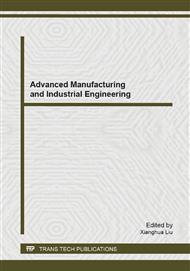p.752
p.756
p.760
p.764
p.768
p.773
p.779
p.783
p.787
An Image Quality Assessment Approach Based on Saliency Map in Space Domain
Abstract:
This paper proposes a no-reference image assessment approach (IQA) based on saliency map in the space domain of the image. The saliency map of the image is extracted by Itti model at first. Next, the saliency-map weighted normalized image is used to get the histogram of the image, then the histogram is modeled by generalized gaussian distribution and the parameter of the generalized gaussian distribution is estimated by parameter estimating approach. Parameters of the generalized gaussian distribution are used as the feature vector for the training and testing image. The feature vectors of the testing image are fed to support vector regresion machine to evaluate the image quality score. Experimental results show that our approach outperforms the recent method of no-reference IQA.
Info:
Periodical:
Pages:
768-772
Citation:
Online since:
August 2014
Authors:
Price:
Сopyright:
© 2014 Trans Tech Publications Ltd. All Rights Reserved
Share:
Citation:


